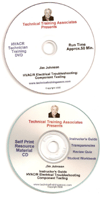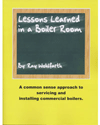For years now, I have strived to apply the quality control (QC) tools of: 1. Data collection; 2. Data analysis; 3. Solution planning; 4. Solution implementation; 5. Monitoring, measuring, and benchmarking; and 6. Suggesting continuous improvements. “Prescription without diagnosis equals malpractice” is equivalent to overlooking QC steps 1 through 3. So often when a problem occurs, individuals are inherently quick to jump to the solution implementation (step 4) without completing the first three steps of the process. They then forget to apply steps 5 and 6.
The QC Process in a Nutshell
If you are going to be in the troubleshooting business, you need to learn how the quality control process works. This is the same process industrial firms apply to make their products better even when there isn’t a problem, which is how I strive to solve problems. It is also the method of choice when training individuals in the group to problem solve an issue such as completing an energy study.Jumping to conclusions is easy but usually not the correct solution and/or the best solution. Even when the answer is obvious, it is good technical practice to still collect the data and analyze the data so that you can assess the various solutions, because frequently there can be good-better-best options. These varied solutions can also be categorized as best first cost and best sustainable cost. Solutions can have a quick-fix ROI, but they can also be categorized as less-than-one-year ROI, less-than-four-year ROI, or greater-than-four-year ROI. Seldom is there one answer to the problem, because there are usually factors associated with the solution, such as:
- Need to do as soon as possible
- Must have a three-year ROI or better
- Can’t be done during normal working hours
- Limited funds are available
- Must be phased
The Ins and outs of Troubleshooting
Troubleshooting is also a different type of consulting engineering. Unlike the engineer who starts with a clean sheet of paper and begins to design a new building construction, major renovation, or tenant fit-out, troubleshooting begins with existing conditions (equipment, distribution, sequence of operation, etc.).Integral with most of our troubleshooting is our use of an air and water balancing contractor to assist in data collection. You don’t assume anything when problem solving. Instead, you collect the data and then analyze the information (review fan or pump curves, motor amps, temperatures, etc.) and, if necessary, you go back and collect more data.
Record documents are always good to have but frequently are not accurate, so again, don’t assume the distribution layout but instead take the drawings and go out and verify distribution and sizes.
It is always good to assume the original design intent was correct for the application and was based on codes and guidelines at that time, but you want to make sure you note current code and industry standards, and how this application would be designed today. This is so that you don’t simply resolve a problem on an antiquated installation without noting and/or recommending bringing the system up to today’s energy-efficient and environmentally friendlier standards.
The QC process and troubleshooting are ways of making the good perform better and the better perform great. When contracted to assess a problematic job, the engineer has 20/20 hindsight to complement the analytical engineering approach to problem solving.
Just remember, don’t jump to the solution without first collecting data, analyzing the data, and then coming up with one or more solution options. Once the solution is implemented, it is essential that monitoring, measuring, and benchmarking the results so that the problem can be documented as solved, and again, with 20/20 hindsight, assess what more can be done to make it continuously better.
In closing, I mentioned how I listen to educational tapes and CD-ROMs when traveling rather then listen to the radio. There are a lot of websites where you can find professional development cassettes on CD-ROM.Engineered Systemsmagazine has its own podcasts you can download for snippets of useful information to fill your time on the way out to a troubleshooting job. ES




